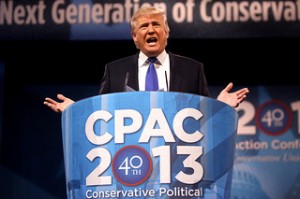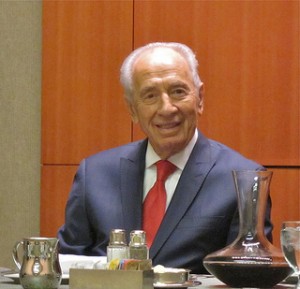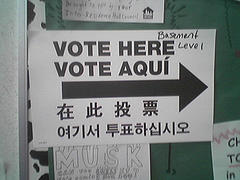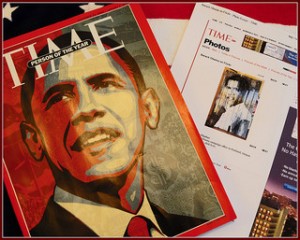In 2002, California became the first U.S. state to pass legislation establishing paid family leaves for workers who need to take time off from their jobs to bond with new children or care for a seriously ill family member. Other states are moving in the same direction, including New Jersey, which began operating a similar program in 2009. Yet only California has amassed years of experience with this important new social benefit.
Six years after the law went into effect, we conducted detailed surveys of California employers and employees in 2009 and 2010. The employer survey reached 253 for-profit and nonprofit worksites of a range of sizes sampled from Dun & Bradstreet; public worksites were excluded. The employee survey reached 500 individuals who had a family event (a new child, a seriously ill family member) covered by the paid leave law.
Our findings offer a rich picture of how effectively paid leave has operated for California employers and employees. We were especially interested in learning whether paid family leave helps to reduce inequalities at work. Before California passed paid leave, many low-wage workers had no access to income support when they took time off to attend to family needs – not even paid sick or vacation days. Most employers who offered paid leaves for care-giving restricted them to professionals and managers. Has the new leave law narrowed the gap?
Benefits Offered by the California Law

California’s pathbreaking program offers nearly all employees in the state – fathers as well as mothers – partial wage replacement if they go on leave to bond with a new biological, adopted or foster child during the first year after the child is born or placed with the family. The program also offers wage replacement to workers who care for a seriously ill parent, child, spouse, or domestic partner.
- To be eligible, workers need only to have earned $300 or more in a covered job during a three-month period in the previous year. This means that most part-time workers are covered, along with full-time employees.
- Workers can receive up to six weeks of wage replacement at 55 percent of their usual weekly earnings, up to a maximum of $1011 per week in 2012. This maximum amount rises with inflation. Benefits are low by international standards, but a good start.
- Self-employed workers can opt into the program, and unionized public sector workers can also join through the collective bargaining process.
Does California’s Program Work?
Our study shows that paid family leave has worked well overall for both employers and employees, but here we focus specifically on the results for low-wage workers. Among respondents to our survey who took leave from jobs that pay $20 per hour or less (or do not offer health insurance), we compared the experiences of leave-takers who used the California law to those who took time off without claiming the legal benefits.
- 84% of those who used the California program received at least half of their usual weekly pay during leave, compared to only 49% of those who took time off outside the program.
- Low-wage workers who used the paid leave program were able to take longer leaves and were more satisfied with the length of their leaves.
- Users of the paid leave program were better able to care for new children and seriously ill family members than low-wage workers who did not take advantage of the law. Babies were more often breastfed, and sick family members did better.
Our findings show that California’s program does make a positive difference – including for workers in the lowest paid jobs who have not previously enjoyed workplace benefits.
The Need to Improve Benefits and Spread Awareness
Over a third of the respondents to our survey who were aware of the paid leave program but did not use its benefits said they were afraid they might lose their jobs or face other negative consequences at work. Others felt the money was insufficient. In the future, California should consider increasing the benefit and adding provisions to protect the job rights of leave-takers.
Meanwhile, six years into the implementation of paid family leave, many Californians remain in the dark about the benefits to which they are entitled. The Field Poll of registered voters taken in September 2011 found that 59% of those with annual family incomes between $60,000 and $100,000 were aware of the state paid leave program, compared to only 25% of those with family incomes ranging from $20,000 to $40,000. Just over half of workers aged 40-49 knew of the benefits, compared to only 27% of workers aged 18-29. Not only is public awareness limited, the low-wage workers, Latinos, blacks, and younger employees who stand to gain the most are the ones who know the least about the program. Not everyone knows about their state’s paid leave program, including lower-wage workers, minorities, and younger employees.In our 2009-2010 survey, respondents who were aware of the program most often learned about it from their employers. Unfortunately, depending on employers to spread the word won’t get the job fully done. Employers have traditionally offered leave benefits to many of their highly paid professionals and managers; telling those employees about the law saves money. But employers do not have the same incentive to inform their low-wage workers.
Citizen associations as well as advocates in California are helping to spread the word and improve the terms of paid family leave. Meanwhile, leaders in other states can learn many valuable lessons from California’s pioneering example.









 Research to Improve Policy: The Scholars Strategy Network seeks to improve public policy and strengthen democracy by organizing scholars working in America's colleges and universities. SSN's founding director is Theda Skocpol, Victor S. Thomas Professor of Government and Sociology at Harvard University.
Research to Improve Policy: The Scholars Strategy Network seeks to improve public policy and strengthen democracy by organizing scholars working in America's colleges and universities. SSN's founding director is Theda Skocpol, Victor S. Thomas Professor of Government and Sociology at Harvard University.